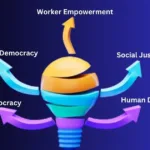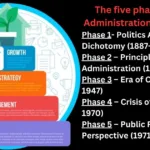
Mahatma Gandhi’s Satyagraha is a philosophy of non-violent resistance that he developed and practiced throughout his life. It is a combination of two Sanskrit words, Satya (truth) and Agraha (firmness), meaning the power of truth or the force of truth. Satyagraha is a way of confronting and overcoming social injustice without resorting to violence. It is a technique of mass civil disobedience that seeks to change unjust laws and practices by non-violent means.
Gandhi developed Satyagraha as a response to the violence and oppression he witnessed during his life, particularly in South Africa, where he lived for over 20 years. He saw how violent resistance often led to more violence, and he believed that non-violent resistance was the most effective way to bring about social change.
At the heart of Satyagraha is the principle of Ahimsa, or non-violence. Gandhi believed that non-violence was not just a tactic but a way of life. He saw it as a universal principle that could be applied to all areas of human activity, including politics, economics, and social relations. Non-violence, he believed, was a way of challenging oppressive power structures while also preserving the dignity and humanity of all individuals involved.
Satyagraha was not just a personal philosophy for Gandhi, but a political strategy. He believed that by embodying the principles of Satyagraha in his own life, he could inspire others to do the same. He believed that by challenging the British Empire through non-violent resistance, he could show the world that India was capable of achieving independence without resorting to violence.
Gandhi’s Satyagraha technique was a multi-stage process that involved the following steps:
1. Identify the injustice: Satyagraha begins by identifying the social, political, or economic injustice that needs to be addressed.
2. Negotiation and dialogue: Gandhi believed in the power of dialogue and negotiation to resolve conflicts. He would engage with the oppressor to try to find a peaceful resolution to the conflict.
3. Non-cooperation: If dialogue and negotiation failed, Gandhi would initiate a campaign of non-cooperation. This involved boycotting the oppressive system and refusing to participate in it.
4. Civil disobedience: If non-cooperation did not bring about change, Gandhi would then initiate a campaign of civil disobedience. This involved breaking the unjust laws, accepting the consequences, and using non-violent means to challenge the system.
Gandhi’s Satyagraha technique was a powerful tool for social change, and it has been adopted by numerous social and political movements around the world. The civil rights movement in the United States and the anti-apartheid movement in South Africa are just two examples of movements that used Satyagraha to challenge oppressive power structures.
In conclusion, Mahatma Gandhi’s Satyagraha is a powerful philosophy of non-violent resistance that has inspired generations of people around the world. It is a technique that seeks to change unjust laws and practices through non-violent means, while also preserving the dignity and humanity of all individuals involved. Satyagraha is a testament to the power of truth, dialogue, and non-violence, and it serves as a reminder that social change is possible without resorting to violence.
People Also Read: Panchayat Raj System in India during British Era











